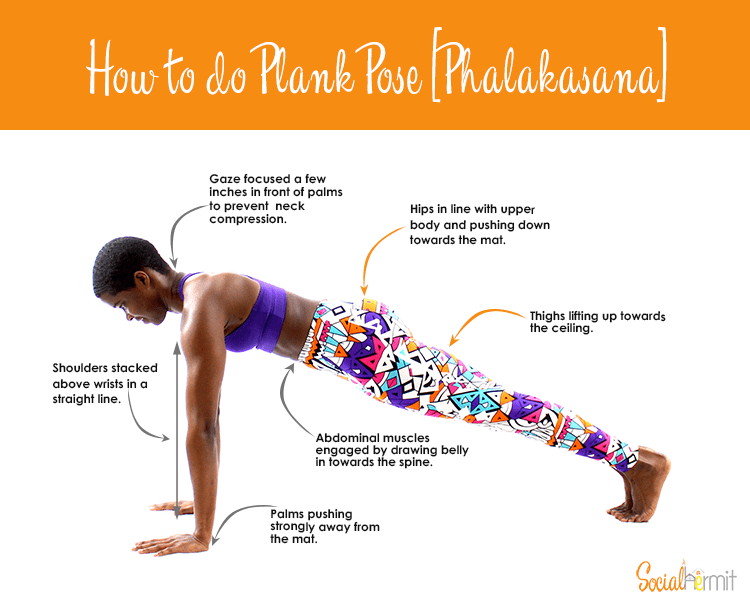
The benefits of doing plank pose are numerous. Its main job is to strengthen core muscles which together, create a support system for the spine. The spine cannot support itself. Strong core muscles are essential for every other type of exercise we do as well as simply holding our body upright. If you work with me, you know I love good posture, “change you posture, change your life!” –but that’s another blog! A strong core helps prevent injury, as a matter of fact, many times when there is lower back pain, it is because of a weak core.
However, performing plank poses incorrectly can be harmful and even cause injury especially over time. My reason for addressing the anatomy of plank pose this month is because I see a lot of incorrect planks. I have been teaching 12 to 14 group classes weekly for the last ten plus years, so I see a lot of planks!
There are three mistakes (misalignment) I see most. The first is the dip in the lower back. The image below shows it as the tailbone lifted. The tailbone is lifted because the lower back is dipping down which means you are compressing the front (anterior) of the lumber spine. Your lumbar will not appreciate that especially if you repeatedly do it that way.

To correct this issue, I tell my students to zip it! Imagine you’re putting on a pair of tight jeans to get the zipper to close (we’ve all done it!), we pull in right below our belly button (transverse abdominis) just enough to close that zipper. When we do that the tailbone slightly tucks under.
The second mistake (misalignment) is letting the chest collapse so that the shoulders blades are lifted (above photo), and all of the supporting shoulder muscles are absorbing the brunt of the work. To correct this issue, press against the floor and pull the shoulders blades (scapulae) back down towards your waist. You are depressing the scapulae.

Finally, the third misalignment is letting the head drop down. I always tell my students to keep their neck (cervical spine) in line with the rest of the spine. People are not even aware that they are doing this. One easy way to tell is if you’re in plank and it’s hard to breath, then you’re dropping your head! You want steady deep breathing while holding plank. The O2 will help you build stamina in order to hold the plank pose. Also, you are strengthening the neck muscle by using them to hold the neck straight. Your cervical spine benefits from strong neck muscles to support it.

There is no question that plank pose requires effort. If you want to build strength you have to practice it regularly so make sure you’re doing it correctly. Otherwise, all of that effort works against you, and you can do more harm than good!
